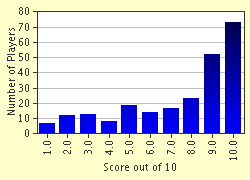Quiz Answer Key and Fun Facts
1. Buenos Aires was initially founded in 1536 by the gold seeking Pedro de Mendoza but failed after 5 years due to attacks by indigenous people. It was "re-founded" in 1580. Who was the new founder?
2. The office of the President of the Republic is situated in the Plaza de Mayo. What is it called?
3. The citizens of Buenos Aires have their own particular slant on the Spanish language. Due to mass immigration over the years pure Castilian Spanish has been infiltrated with words from other countries, mainly Italy, producing a type of slang known as?
4. As it is situated on the Rio de la Plata, Buenos Aires has been a centre of trade for Argentina and for some surrounding countries with ships docking and departing on a daily basis. Bearing this in mind what do you think the natives of Buenos Aires are known as?
5. The tango is both a dance and a type of music which has spread from the port area of Buenos Aires to many countries in the rest of the world. Who, purportedly, originally did this dance?
6. This man born in Toulouse, France in 1890 became the greatest tango singer to date. He recorded over 500 tangos and traveled throughout Latin America and Europe, drawing big crowds in Paris. His 1917 Tango, "Mi Noche Triste" sold more than 100,000 copies. Sadly, his life was cut short when he died in a plane crash in Medellin, Colombia. What was his name?
7. This is the resting place of many famous Latin Americans including presidents, authors with possibly the most famous being Eva Duarte de Peron who was immortalized in the musical Evita. What is this cemetery called?
8. During the early part of the 20th century there was wave after wave of immigration to Buenos Aires with a large percentage of the immigrants coming from Italy. With the immigrants came the food and culture. Nowadays, in Buenos Aires, you can find a "Fabrica de Pasta" or pasta shop in nearly every street selling all types of fresh pasta. Traditionally, one type of pasta is eaten on the 29th of each month. What type?
9. With the vast Pampas close to the city, Buenos Aires is well provisioned with beef. There are many restaurants catering for the locals' longing for their favorite meat. What are these called?
10. Under military rule from 1976 to 1983, Argentina lost approximately 30,000 of its young people and intellectuals during the "Guerra Sucia" or "Dirty War" that the government waged to suppress left-wing feelings in the country. One group of women gather every Thursday in a square in the city to demand information about these "disappeared" people. Who are they?
Source: Author
irishmark
This quiz was reviewed by FunTrivia editor
minch before going online.
Any errors found in FunTrivia content are routinely corrected through our feedback system.


